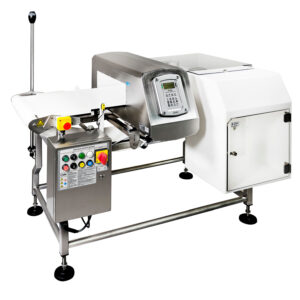
Choosing the right metal detector can be a complex process. Especially when product characteristics such as salt content and temperature variations are involved. It becomes critical to then choose the correct model of metal detector to best cope with these variations. Partnering with a supplier with extensive experience, and who understands and can explain, the various concepts behind the technology becomes even more critical to success.
Distributor Heat and Control is expert in packaging and inspection solutions for the food industry. While many processors expand their product ranges to remain competitive and/or capture new markets — the pandemic has also seen them putting in additional production lines — to help them pivot their operations and meet demand for new and different products.
In many cases, their standard metal detector is no longer able to cope with the variety of products running down their new lines, but by using high performance solutions which incorporate multi-spectrum technology, they are now able to successfully manage the variation of products produced.
CEIA is the world’s largest manufacturer of metal detectors — and the only company to make metal detectors using a patented cutting-edge multi-spectrum technology. This innovative technology uses multiple frequencies simultaneously — meaning that they can increase sensitivity — reduce false rejects — and detect thin metal fragments.
The CEIA THS/MS21 is described as the world’s only multi-spectrum metal detector. It has unique detection capabilities and extreme sensitivity of magnetic, non-magnetic, and even 316 stainless-steel metal contaminants, and is available in a USDA-approved design.
It is suitable for nearly all variations of food product characteristics — and can detect foreign objects while operating simply, efficiently and at high speed — at the same time, collecting and retaining important production run data.
Integrated ‘auto learn’ functionality allows these metal detectors to be easily set up for new products all the while ensuring high levels of sensitivity. With minimal manual adjustment, the metal detector can quickly learn the properties of any new product and informs the user on how many passes it needs in order to understand and map the new product. More importantly the MS21 also self-calibrates itself on a continuous basis and logs the result in the data stream confirming that the unit is operating at its optimum level. If there is a problem in its calibration the unit raises an alarm, which can be audible and visual highlighting that there is a noncompliance. This feature not only saves on the possibility of a contaminant escaping detection but more importantly reduces the risk of a potential expensive recall, along with damaging a products brand.
The auto learn function also outperforms other metal detectors which experience difficulty inspecting non-homogenous products. Inferior, traditional metal detectors commonly trigger ‘false positives’ during metal detection, usually when food composition and mineral levels incorrectly indicate the presence of metal. This leads to a perfectly good product being rejected and the loss of a profitable, saleable product.




























































































